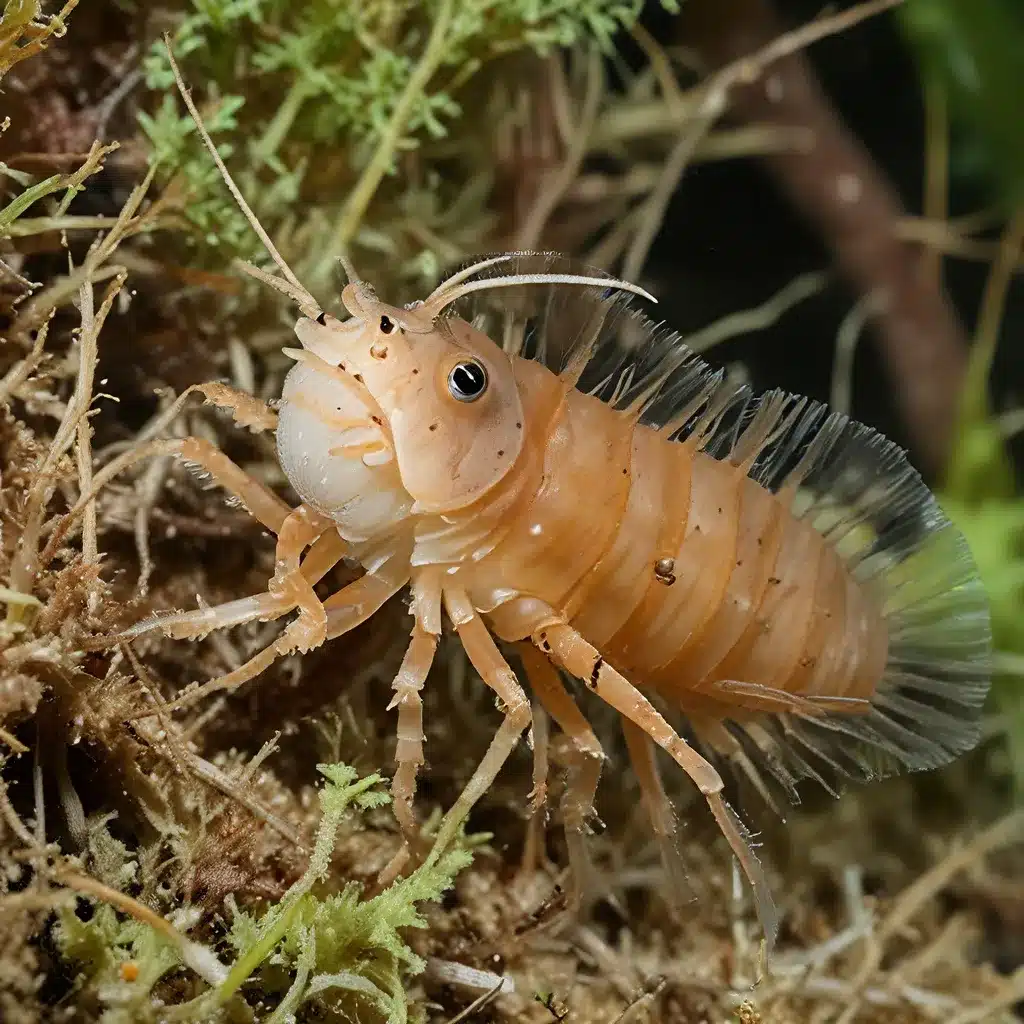
The Significance of Crustaceans
When it comes to cultivating a thriving and biodiverse aquarium ecosystem, the role of crustaceans cannot be overstated. These small yet remarkable organisms serve as vital components of the aquatic food web, contributing to the overall stability and resilience of our carefully crafted underwater habitats. By understanding the unique needs and behaviors of various crustacean species, aquarists can create captivating aquariums that mirror the natural abundance and complexity of their real-world counterparts.
King Aquarium understands the profound impact that crustaceans can have on the success of an aquarium. From the bustling activity of scavenging shrimp to the captivating grazing patterns of tiny amphipods, these creatures play a pivotal role in maintaining water quality, facilitating nutrient cycling, and providing invaluable supplementary nutrition for our finned companions.
Embracing the Allure of Amphipods
One group of crustaceans that has captured the attention of aquarists worldwide is the amphipod. These small, nimble creatures are often overlooked, but their importance in the aquatic ecosystem is undeniable. Amphipods are known for their diverse feeding habits, consuming a wide range of organic matter, from decaying plant material to delicate biofilms.
Amphipod Diversity: The amphipod family is remarkably diverse, with over 10,000 described species found in a variety of aquatic habitats, from freshwater streams and lakes to the vast expanse of the world’s oceans. This diversity allows aquarists to select species that are well-suited to their particular aquarium setup, whether it be a lush planted tank, a serene blackwater biotope, or a thriving reef environment.
Functional Benefits: Beyond their aesthetic appeal, amphipods play a crucial role in maintaining the health and balance of the aquarium ecosystem. As they graze on algae and detritus, they help to prevent unsightly buildup and maintain water clarity. Additionally, their presence can provide a natural source of nutrition for small fish, shrimp, and other invertebrates, reducing the need for constant supplemental feeding.
Adaptability and Hardiness: Many amphipod species are known for their remarkable adaptability and hardiness, making them well-suited for a wide range of aquarium conditions. From the delicate freshwater Hyalella azteca to the hardy marine Ampithoe valida, aquarists can find amphipod species that thrive in their particular setup, ensuring a vibrant and self-sustaining crustacean community.
Cultivating a Diverse Crustacean Community
Establishing a thriving crustacean community within your aquarium requires a multifaceted approach, taking into account the unique needs and preferences of the various species you wish to incorporate.
Substrate Considerations: The substrate composition in your aquarium can have a significant impact on the success of your crustacean community. Incorporating a diverse array of natural materials, such as crushed leaves, botanicals, and even small twigs, can create a rich and varied habitat that supports a wide range of crustacean species.
Water Parameter Management: Closely monitoring and maintaining appropriate water parameters is crucial for the well-being of your crustacean inhabitants. Factors such as pH, temperature, and dissolved oxygen levels can have a profound impact on the health and reproduction of these delicate creatures.
Nutrition and Feeding: Providing a diverse and balanced diet is essential for sustaining a thriving crustacean community. In addition to commercial fish foods, consider supplementing with natural food sources, such as algae, biofilms, and decomposing plant matter, to mimic the diverse nutritional opportunities found in their natural habitats.
Aquascaping and Hiding Spots: Thoughtful aquascaping that incorporates ample hiding spots and complex structures can greatly benefit your crustacean community. Incorporating driftwood, rock formations, and dense plant growth can create a more natural and enriching environment, allowing your crustaceans to thrive and exhibit their natural behaviors.
Patience and Observation: Cultivating a diverse crustacean community requires a commitment to patience and careful observation. It may take time for your amphipods and other crustaceans to establish themselves and begin to reproduce, so be prepared to allow your aquarium to evolve naturally, adjusting your care approach as needed.
Unlocking the Potential of Amphipods
As aquarists, we have the unique opportunity to create aquatic environments that not only captivate our senses but also serve as vibrant, self-sustaining ecosystems. By embracing the allure of amphipods and incorporating them into our aquarium designs, we can unlock a world of diversity, balance, and natural beauty that will enrich our aquatic adventures.
King Aquarium encourages aquarists to explore the fascinating realm of crustaceans and to experiment with cultivating thriving amphipod communities within their aquariums. Through thoughtful planning, dedication to water quality, and a keen eye for observation, you can unlock the true potential of these remarkable creatures and create aquascapes that not only delight the senses but also contribute to the health and resilience of your aquatic ecosystem.
So why not dive in and discover the alluring world of amphipods? With the right approach and a touch of patience, you can foster a diverse crustacean community that will captivate and inspire you for years to come.

